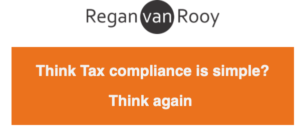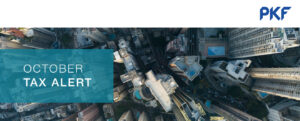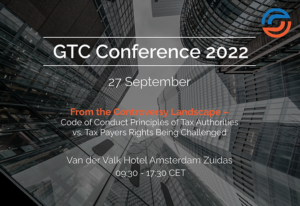Pre-recorded lectures on anti-avoidance and CFC provisions using S.Africa as a practical example:
Lecture 14 Anti-avoidance LECTURE: https://www.dropbox.com/s/m1hzmk3ojko3h6f/Week{780f53c297e2c008074d23b865a0ce0b35a4f08852d8e1e49466a5a902c4e44e}2014_DrErasmus.mp4?dl=0 – please note that you were required to listen to this lecture to answer Tutorial question 97. If you have done so, please do the additional reading below, and only then move onto the CFC lecture. If you have not listened to this lecture and answered Tutorial question 97 please do so ASAP. Additional notes on the Tax Administration Act (S.Africa) Penalty Provisions: § 7.3 TAA Penalties incl penalties on reportable arrangements. Here are more notes on Reportable Arrangements: Reportable arrangement notes.
Lecture 15 CFCs LECTURE is set out further below with points to take note of: https://www.dropbox.com/sh/a8kckgu4m7xpvu8/AAAZGrn6iDb8MVZ12krR2mqLa?dl=0
Lecture 16 – no lecture but please submit as Tutorial 16 a brief one page answer to POTENTIAL EXAM QUESTION with “guarantee member” and CFCs as set out below and in Tutorial Question 99.
Please note, that these 2 lectures 14 and 15 (anti-avoidance and CFCs) use S.Africa as a practical example of the typical anti-avoidance and evasion provisions you will find in different jurisdictions. You should have read your textbook that gives you a broad overview of anti-avoidance principles and measures you will encounter in domestic and international tax law.
These lectures now focus on S.Africa as a specific example of the application of some of these principles. This serves as an example of how anti-avoidance and evasion provisions are applied in practice. We look at common law principles, and GAAR provisions, as well as reportable arrangements and aspects of the S.African Tax Administration Act (TAA) that gives you pointers on how to interact with a Revenue Authority in the case of an audit. As much as reference is made to the TAA and note updates, simply listen to what is being said. References are also made to other legislation. It is NOT NECESSARY for you to access the TAA or the other legislation referred to look up the sections, unless you want to do so for your own purposes. Reference is made to a textbook in the lectures. That reference is replaced by these notes that deal specifically with key anti-avoidance provisions in S.Africa: SA Anti-avoidance These notes supplement the lecture on the application of anti-avoidance principles should you require more detail – you will not be examined on these specific principles, but it is good to know about them.
For ease of reference here is case 198 on double jeopardy referred to in the lecture: SA Tax Board Decision No case 198
COMPULSORY ADDITIONAL READING – PLEASE ALSO read the references to Victor Thuronyi Comparative Tax Law – eBook below (Sections/Chapter 5.1 to 5.7), which explains the anti-avoidance principles in a broader context.
In essence:
- Taxpayers tend to structure applying a literal interpretation of tax legislation;
- Courts may disallow benefits if there is a sound legal basis for doing so. What is that sound legal basis? That is where the anti-avoidance provisions in domestic law per country and as per international tax law in the double tax treaty provisions, come into play;
- This usually involves a judge-made decision or statutory anti-avoidance rule;
- Such a rule may allow the statutory language applied on a literal basis to substantiate the tax structure being set aside in favour of taxation based on the economic substance of the transaction;
- In which circumstances do such anti-avoidance provisions apply?
- Sometimes the anti-avoidance provision is applied by the court not recognizing the labeled legal transaction put forward by the taxpayer eg. a debt incurring a very high interest rate, may not be regarded in terms of commercial law as a debt in the first place, thus calling into question the interest deduction. The courts will give effect to the true nature of the legal transaction and the tax consequences that flow from that;
- READ Thuronyi at the bottom of page 152 “Experience has taught legislatures and courts in most OECD countries…(onto page 153 top paragraph ending at)…and the extent of uncertainty will vary from country to country.”
- Because countries have not adopted a uniform approach to tax avoidance substantial differences between countries will continue to exist;
- IMPORTANT TO NOTE: A well documented set of anti-avoidance rules have developed in the OECD Model Tax Convention commentaries (see the 2017 version in pdf, and search the text for the word “anti-avoidance” to get an idea of the extent thereof) but these interplay with domestic anti-avoidance provisions, which are applicable, depends on a careful analysis of the facts and circumstances in each case – THIS COULD BE A POTENTIAL EXAM QUESTION;
- Statutory GAAR provisions are at best problematical and sometimes difficult to apply, due to their broadness and complexity. However, in their application, a set framework will exist where the Revenue Authority must meet all the jurisdictional facts of the GAAR provisions, but ultimately the onus of proof tends to lie with the taxpayer. In applying common law anti-avoidance provisions, the onus of proof may lie with the Revenue Authority who allege anti-avoidance. Check each jurisdiction carefully;
- Common law developed anti-avoidance provisions are even more problematical, covering the following broad areas: sham transactions, simulation, and abuse of law. PLEASE READ Thuronyi 5.6 and 5.7.
Lecture 15 CFCs LECTURE: https://www.dropbox.com/sh/a8kckgu4m7xpvu8/AAAZGrn6iDb8MVZ12krR2mqLa?dl=0
The reference to section 9D on CFCs in South Africa is here: cfc eg. 9D.Net income of controlled foreign companies.—(1) For the purposes of this section
When reference is made to the Tax Administration Act (“TAA”) in S.Africa, there is no need to access the Act. Simply listen.
As already stated this lecture gives a practical example of applying CFC provisions in S.Africa as an example.
Skip from 33 minutes into the lecture to 43 minutes 30 secs into the lecture where there were connection issues.
Where reference is made to the textbook in the lectures, replace with this up-to-date textbook extract on S.African CFC provisions:2018 CFC textbook notes
For lecture 16 tutorial: POTENTIAL EXAM QUESTION with “guarantee member” and CFCs : Take a look at the following CFC problem below and read the supporting documentation, and determine if there is a CFC problem using the “guarantee member” structure:CFC eg. Problem with “guarantee member”
HYBRID COMPANIES – read about this interesting type of company that ‘acts’ like a trust, but is not a trust, and could be useful to side-step certain anti-avoidance provisions (eg. CFC rules) aimed at passive income receipts by trusts. Look at this and think about what anti-avoidance rules may apply.
cfc eg. 9D.Net income of controlled foreign companies.—(1) For the purposes of this section— with relevant highlighted sections relevant to the “problem with a guarantee member” referred to above. Read this with an explanation of such a “guarantee member” in HYBRID COMPANIES immediately above.
QUESTION TO ANSWER: Would the guarantee member have “participation rights” as envisaged in section 9D? one-page only.
Follow curriculum – Reading:
7 Chapter Anti-avoidance Measures – Chapter 7
OECD Income and Capital Model Convention and Commentary 2017 ARTICLES 24 and 26, and commentaries
UN Model Double Taxation Convention and Commentaries 2011 Update ARTICLES 24 and 26, and commentaries
http://www.oecd.org/ctp/beps-2015-final-reports.htm – Action 3 – CFC
International Tax- Tax Havens and Tax Avoidance report – look at:
Where Are the Tax Havens? ……………………………………………………………………………………………… 3
Methods of Corporate Tax Avoidance ………………………………………………………………………………… 9
Methods of Avoidance and Evasion by Individuals …………………………………………………………….. 24
Narrower Provisions Affecting Multinational Profit Shifting …………………………………………. 32
Options to Address Individual Evasion …………………………………………………………………………….. 34
Victor Thuronyi Comparative Tax Law – eBook, especially:
5.1 In General 133
5.2 Conflicting Maxims 136
5.3 Country Practice 137
5.4 Tax Avoidance: Introduction 150
5.5 Tax Avoidance and Evasion 154
5.6 Sham Transactions, Simulation, and Abuse of Law 157
5.7 General Anti-Avoidance Rules 160
Additional supplementary reading – some required to answer tutorial questions:
Basic International Taxation Vol I by Roy Rohatgi – eBook – Chapter 4.8
14 16 2018 Anti abuse legislation The Importance of Substance in a Private Equity Fund Context – good summary of current general anti-avoidance issues
14 16 anti-avoidance how robust is a Structured Finance Deal
14 16 BEPS OECD Harmful Tax Practices ‑ 2017 Progress Report on Preferential Regimes
14 16 2018 Anti abuse legislation The Importance of Substance in a Private Equity Fund Context
HYBRID COMPANIES – read about this interesting type of company that ‘acts’ like a trust, but is not a trust, and could be useful to side-step certain anti-avoidance provisions (eg. CFC rules) aimed at passive income receipts by trusts. Look at this and think about what anti-avoidance rules may apply.
14 16 Country Summary International Anti Avoidance provisions
Tutorial and assignment questions, dates and requirements:











